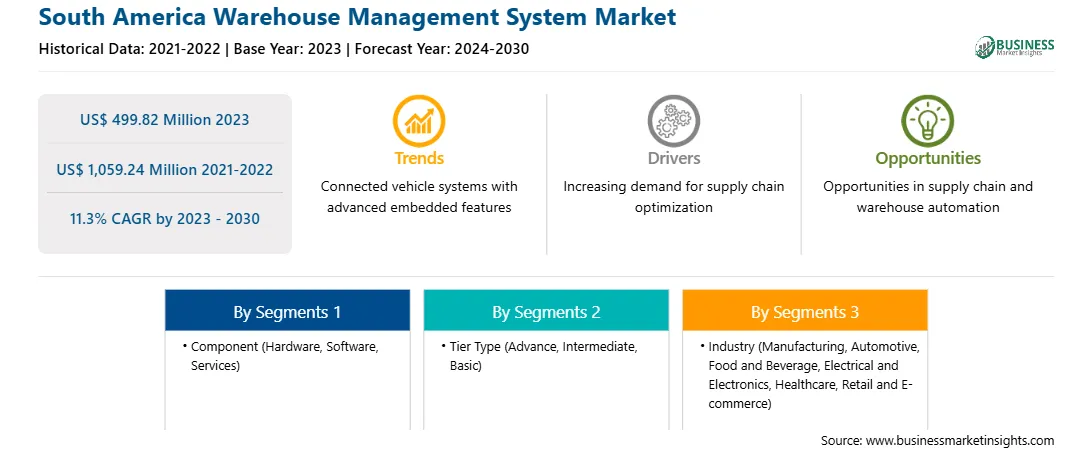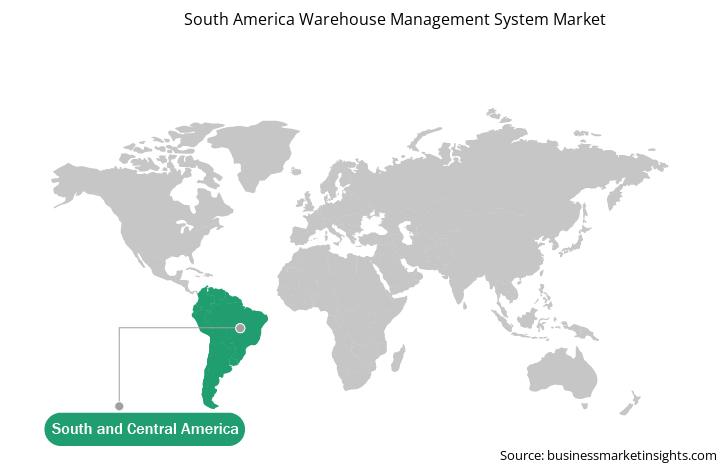Among distributors and manufacturers, the demand for warehouse management systems continues to rise across basic functionality with the flexibility to grow and expand the supply chain. To support multiple clients at a warehouse or serve one enterprise, distributors and manufacturers focus on increasing profitability with the help of cloud migration. The cloud-based warehouse management solutions with an efficient and structured methodology ensure the successful migration of dynamic and master data into the target system. Moreover, a cloud-based, customizable, standalone warehouse management system with integrated enterprise resource planning (ERP) systems and supply chain modules streamlines every business process. As information technology undergoes rapid change, organizations of all types embrace moving computing infrastructure from on-premises to the cloud. In May 2020, Manhattan Associates Inc.—one of the significant leaders in warehouse management software—unveiled the new Manhattan active warehouse management solution, the world’s first cloud-native enterprise-class WMS. In addition, it unifies every aspect of distribution and never needs upgrading. Therefore, modernizing, upgrading, and improving an incumbent warehouse involves migrating data from platform to platform and from on-premises to cloud systems.
Growing economies across manufacturing, healthcare, and retail sectors impact operational efficiencies, resulting in increased production levels to manage the increasing consumer demands. To address these growing demands, warehousing companies are also continually progressing to overcome any challenges that may arise due to fluctuating product markets and logistics schedules. Moreover, advanced technologies are being implemented in warehouse management systems to meet customer requirements. With the help of big data, artificial intelligence, and advanced predictive analytics technologies, conventional warehouse planning and analysis enhance real-time stock-level information. It is used to optimize ordering quantities and delivery timing. In addition, predictability and service level for the end consumer can be visibly improved, and risks of supply chain disruptions are minimized. More advanced use of computer vision in autonomous machines, such as transport robots in warehouses or drones for the transportation of packages directly, will allow future integration of these devices into the Internet of things, thereby improving the efficiency of the logistics supply chain.
South America Warehouse Management System Market Overview
The e-commerce boom in South America is changing how companies serve their customers. Brazil is a driving force in South America’s economy and economic trends, one major trend being e-commerce. The Brazil e-commerce industry rose by 31% in the first six months of 2021 compared to the first six months of 2020. In addition, the total number of orders increased by 7.4%. Thus, the rising e-commerce sector contributes to the increase in the need for warehousing, propelling the demand for warehouse management systems.
There is rising for automation in South America to reduce attractive labor costs and contributes to building companies’ reputations for delivering high-quality products quickly and reliably. While this growth is creating excitement among the region’s executives, it is also presenting them with new challenges. Today, there is special pressure on businesses in South America to adopt leading-edge supply chain practices and tools to collaborate with their new global partners, compete successfully in international markets, and increase profitability.
South America Warehouse Management System Market Revenue and Forecast to 2030 (US$ Million)
Strategic insights for the South America Warehouse Management System provides data-driven analysis of the industry landscape, including current trends, key players, and regional nuances. These insights offer actionable recommendations, enabling readers to differentiate themselves from competitors by identifying untapped segments or developing unique value propositions. Leveraging data analytics, these insights help industry players anticipate the market shifts, whether investors, manufacturers, or other stakeholders. A future-oriented perspective is essential, helping stakeholders anticipate market shifts and position themselves for long-term success in this dynamic region. Ultimately, effective strategic insights empower readers to make informed decisions that drive profitability and achieve their business objectives within the market. The geographic scope of the South America Warehouse Management System refers to the specific areas in which a business operates and competes. Understanding local distinctions, such as diverse consumer preferences (e.g., demand for specific plug types or battery backup durations), varying economic conditions, and regulatory environments, is crucial for tailoring strategies to specific markets. Businesses can expand their reach by identifying underserved areas or adapting their offerings to meet local demands. A clear market focus allows for more effective resource allocation, targeted marketing campaigns, and better positioning against local competitors, ultimately driving growth in those targeted areas.South America Warehouse Management System Strategic Insights

South America Warehouse Management System Report Scope
Report Attribute
Details
Market size in 2023
US$ 499.82 Million
Market Size by 2030
US$ 1,059.24 Million
Global CAGR (2023 - 2030)
11.3%
Historical Data
2021-2022
Forecast period
2024-2030
Segments Covered
By Component
By Tier Type
By Industry
Regions and Countries Covered
South and Central America
Market leaders and key company profiles
South America Warehouse Management System Regional Insights

South America Warehouse Management System Market Segmentation
The South America warehouse management system market is segmented based on component, tier type, industry, and country. Based on component, the South America warehouse management system market is segmented into hardware, software, and services. The hardware segment held the largest South America warehouse management system market share in 2023.
Based on tier type, the South America warehouse management system market is segmented into advance [Tier 1], intermediate [Tier 2], and basic [Tier 3]. The intermediate [Tier 2] segment held the largest South America warehouse management system market share in 2023.
Based on country, the South America warehouse management system market is segmented into Brazil, Argentina, and the Rest of South America. Brazil dominated the South America warehouse management system market share in 2023.
International Business Machines Corp; SAP SE; Epicor Software Corp; Softeon Inc.; Oracle Corp; Panasonic Holdings Corp; Infor Inc; Manhattan Associates Inc; and PTC Inc are the leading companies operating in the South America warehouse management system market.
The South America Warehouse Management System Market is valued at US$ 499.82 Million in 2023, it is projected to reach US$ 1,059.24 Million by 2030.
As per our report South America Warehouse Management System Market, the market size is valued at US$ 499.82 Million in 2023, projecting it to reach US$ 1,059.24 Million by 2030. This translates to a CAGR of approximately 11.3% during the forecast period.
The South America Warehouse Management System Market report typically cover these key segments-
The historic period, base year, and forecast period can vary slightly depending on the specific market research report. However, for the South America Warehouse Management System Market report:
The South America Warehouse Management System Market is populated by several key players, each contributing to its growth and innovation. Some of the major players include:
The South America Warehouse Management System Market report is valuable for diverse stakeholders, including:
Essentially, anyone involved in or considering involvement in the South America Warehouse Management System Market value chain can benefit from the information contained in a comprehensive market report.